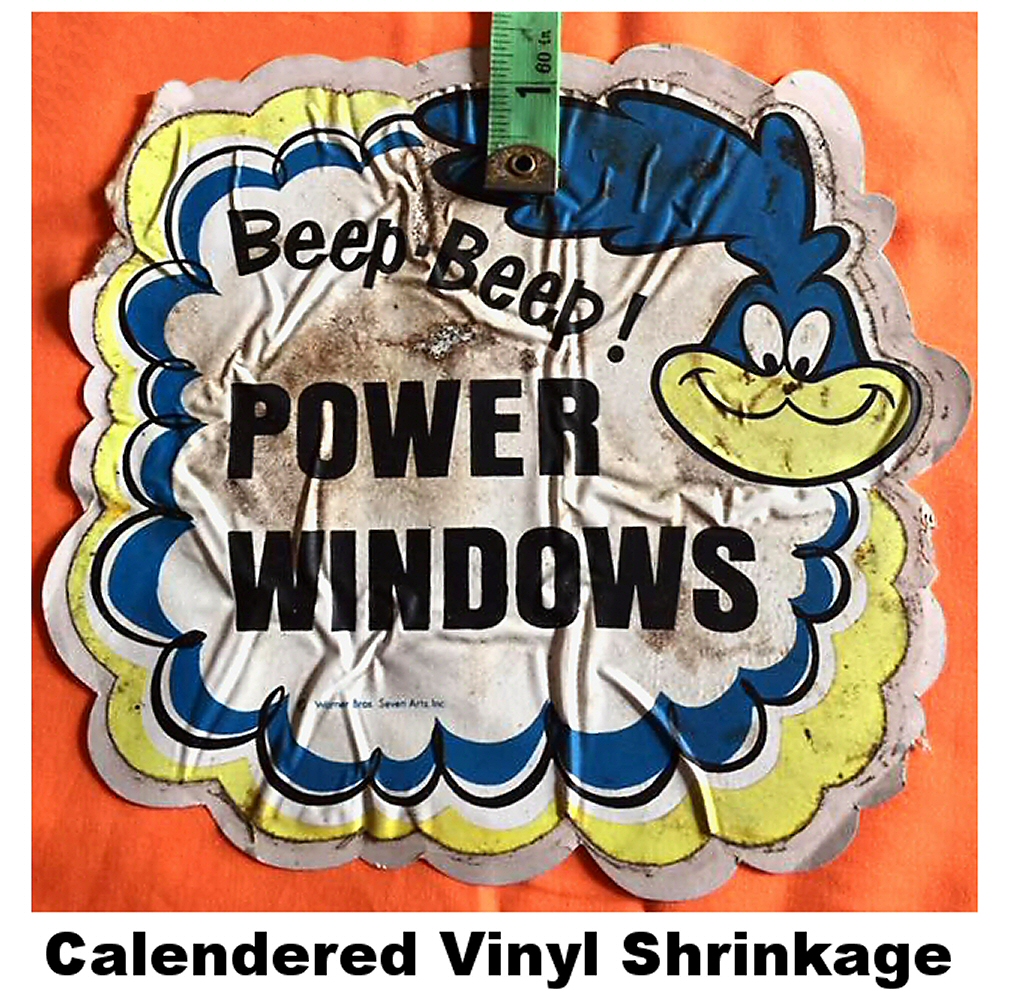meaning that a large ball of vinyl is squeezed through
progressively higher pressure rollers until it is 4 mil thick.
This method causes the vinyl to have a “memory”, and it
will always, even when applied to the car, want to shrink
inwards towards the center.
Correct vinyl 40 years ago, and today, is “cast” material.
The vinyl is poured into an extremely precise mould,
where it solidifies to 2 mil. There is no memory shrinkage
with cast vinyl. All Premium Commercial-Automotive vinyl
made by 3M is cast vinyl.
